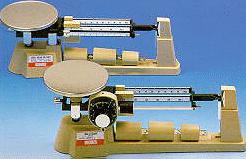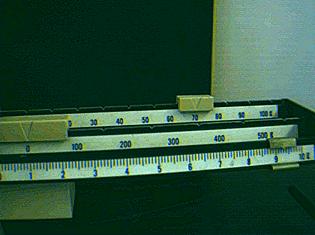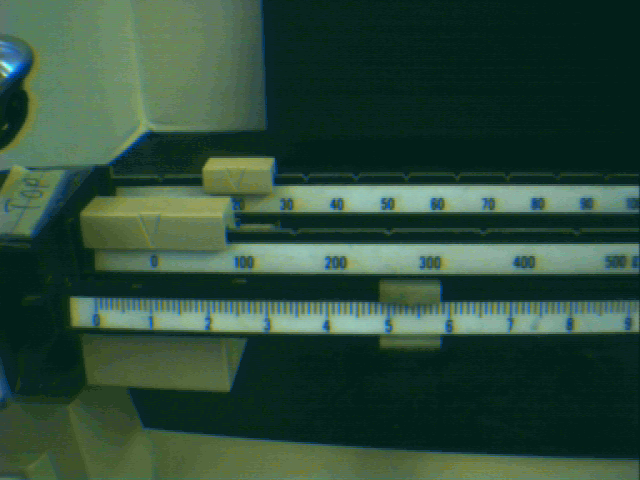How to find the mass of a solid using a triple beam balance
Mass is the amount of matter an object has. We often use a triple-balance beam to measure mass.
A triple-beam balance gets its name because it has three beams that allow you to move known masses along the beam.

Here is a picture of a triple beam balance. You probably have used one in school.
There are also many other types of balances. Scientists need balances that can measure very small amounts of mass.
Because a triple beam balance compares a known mass to an unknown mass it is unaffected by gravity. Unlike a spring scale which really measures weight, the triple beam balance gives a true measure of mass.
Do you often get confused between mass and weight? Check out the Mass vs. Weight Page
Now it's time to practice your skills using the triple-beam balance.
Problem 1:

A block is put onto a triple beam balance.
What is the mass of the object (to the closest tenth of a gram)?
Remember to find the mass using a triple beam balance you must add the mass values of each of the three beams.
Type your answer in the space provided below, then hit the submit button.

The mass of the object is:
Please enter your answer for Block I in the space provided:
Problem 2:
A
block having the same dimensions is now put on the scale. What is the mass of
this object? 
Please enter your answer for Block II in the space provided:
Problem 3:If both objects were put on the scale at the same time their total mass would be :
Please continue to the next chapter on volume.
Or search for more specific information on Mass -- Density -- Volume
- - -Or return to the Science and Math Activity Home Page
Mass Volume Density Activities
Mass: Learn how to measure the mass of an object using a triple beam balance
Mass vs. Weight: Mass and weight are often confused by many students. Learn the difference and try some challenging problems.
Volume: Measure volume using a graduated cylinder.
Density of a Solid: Learn to calculate the density of an unknown solid from knowing its mass and volume.
Density of a Liquid: Learn to calculate the density of an unknown liquid from knowing its mass and volume using a graduated cylinder and triple beam balance. Learn what a hydrometer is, and what it can do.
Why does ice float? Why does ice float in water?
Density Challenge: Great page for gifted and talented students! Some excellent challenging problems.
Assessment: Twenty questions on mass, volume and density (two levels of difficulty). Your test is marked online.
Science Project Ideas: Ideas for science projects using mass, volume and density concepts learned from this module.
Mass Volume Density Lab Exercise: Problem: What is the relationship between water pressure and depth of water?
An Integrated Math Science and Art (STEAM) Activity- Mass, Volume Density Activity using the Gates Project from Central Park NYC.
